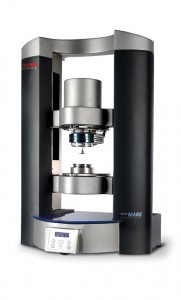The microstructure of liquid foods has an important impact on its quality. This microstructure is a function of the physico-chemical bonds and inter/intra-molecular associations between the ingredients in any recipe.
The microstructure impacts fundamentally on the flow characteristics of the material, for example the viscosity and elasticity (analogous to the ‘liquid-like’ and ‘solid-like’ components of the material), which in turn dictate the heat and mass transfer (heating, pumping and mixing) requirements, so that the liquid is properly processed. Viscosity and elasticity are called rheological parameters and may be measured in the laboratory by viscometers and rheometers.
A second, equally important, impact from the microstructure is on the texture of the material. Textural qualities, like mouthfeel, spreadability etc., are intimately related to the rheological parameters of the material. Over- or under-processing e.g. excessive (or insufficient) shear or heat, can adversely impact the textural quality. Only by measuring the important rheological parameters, which directly influence textural characteristics can these processing impacts be qualified and quantified.
The microstructure and textural qualities can only be measured with high levels of accuracy, repeatability and certainty by a rigorously designed instrument (a rheometer or viscometer) with scientifically accepted measurement geometries (cone and plate, parallel plate, concentric cylinder).

